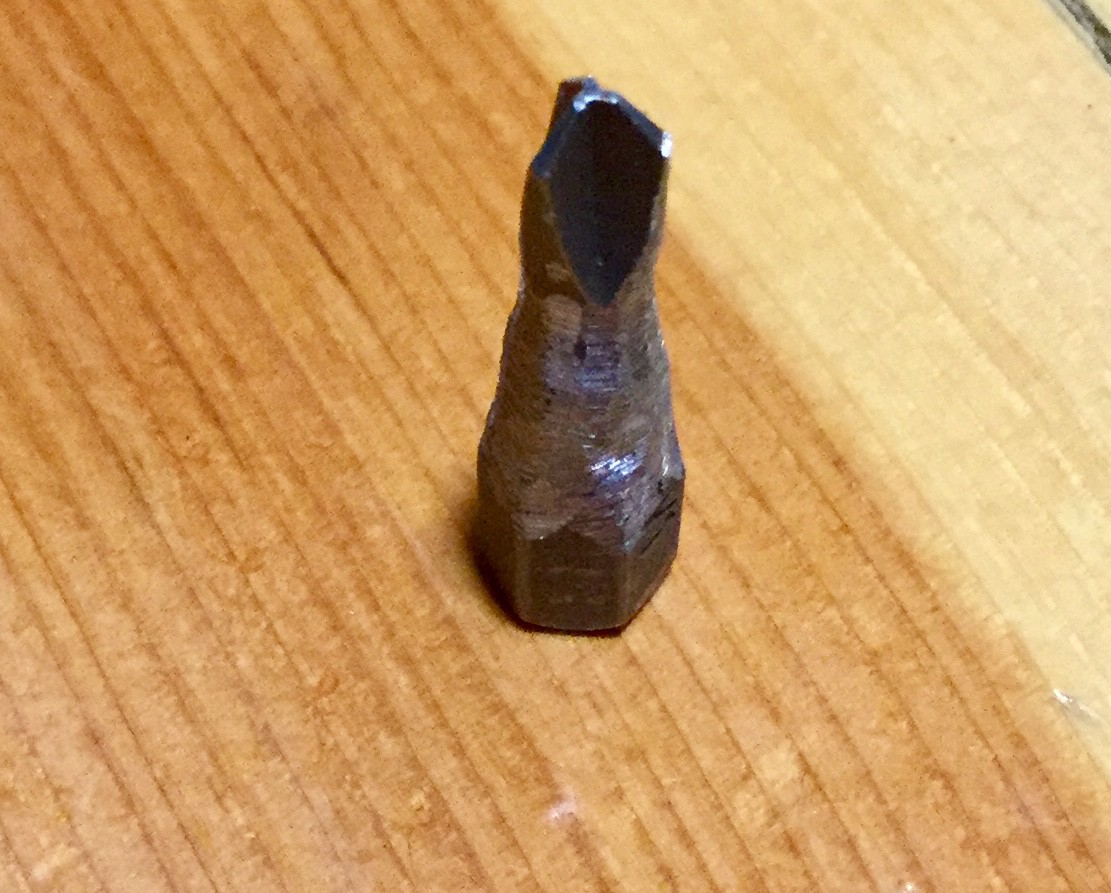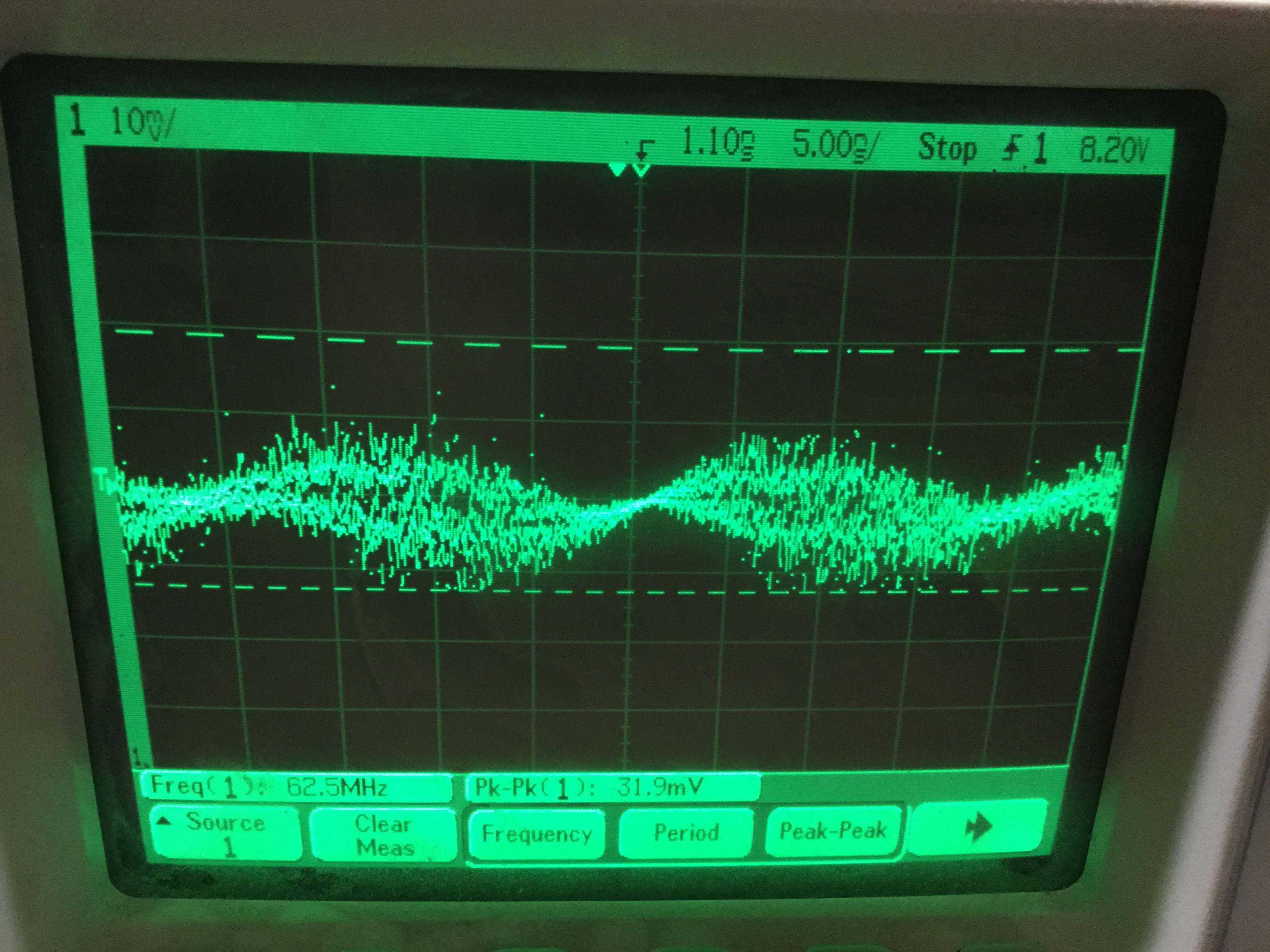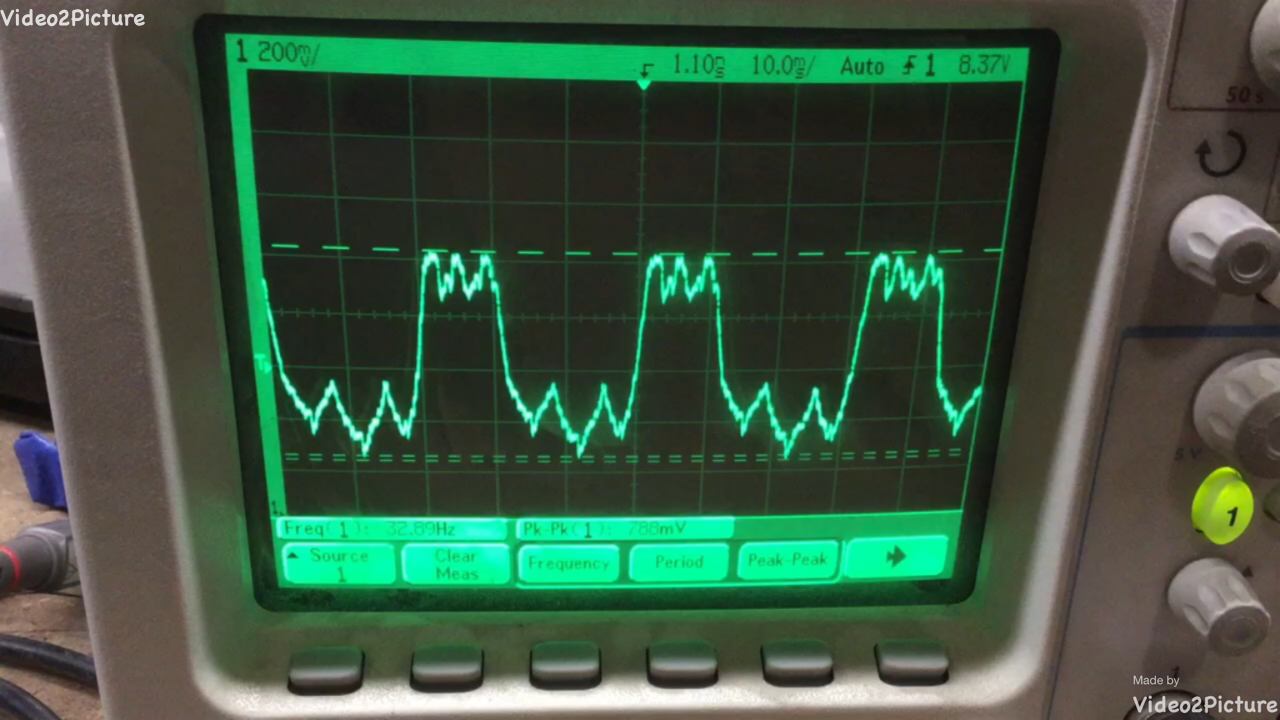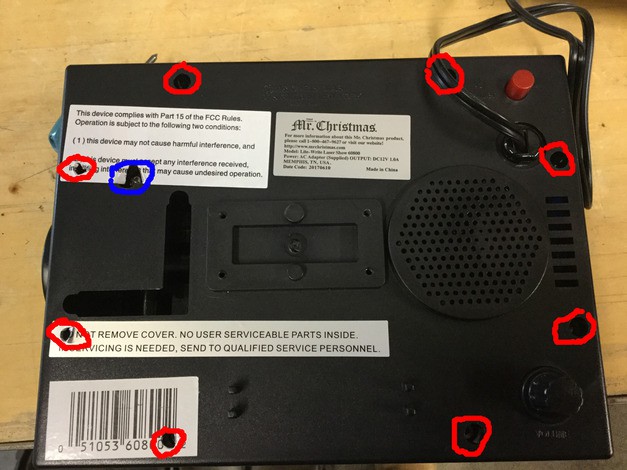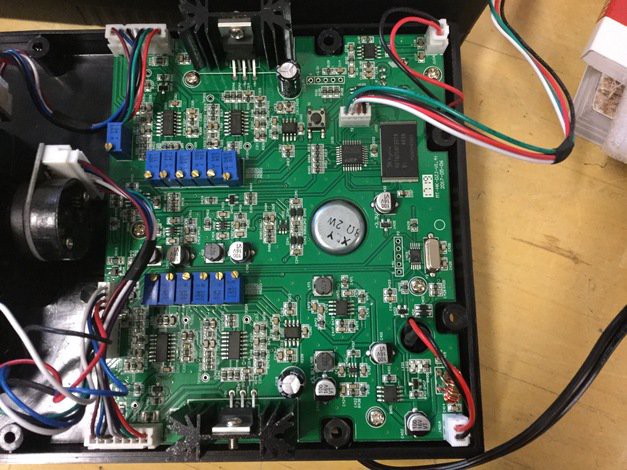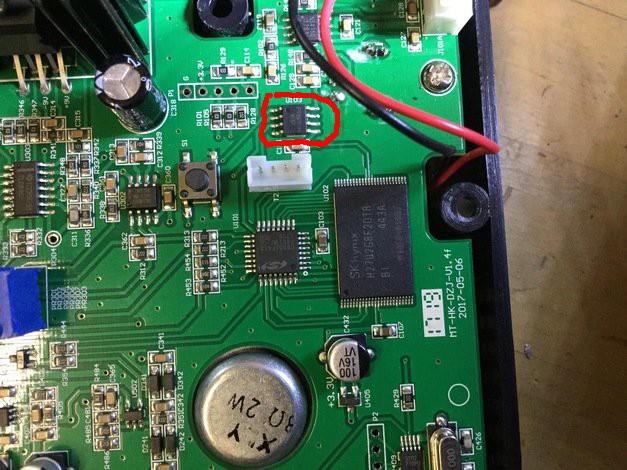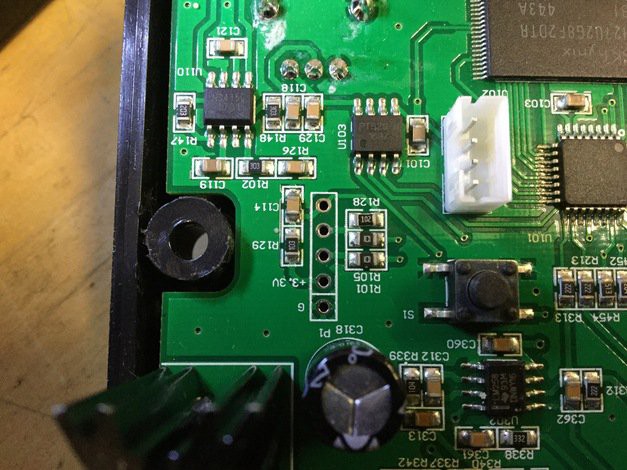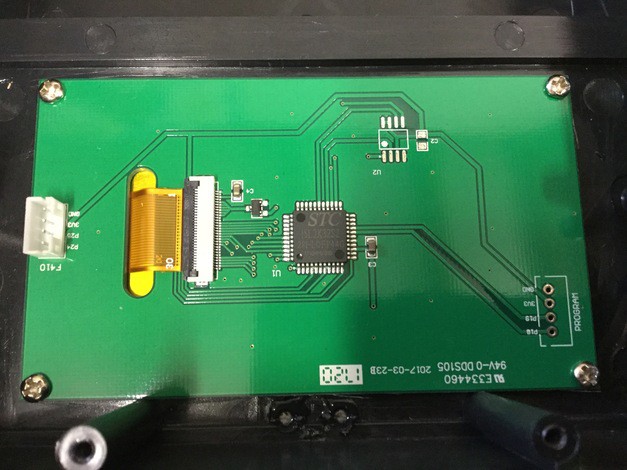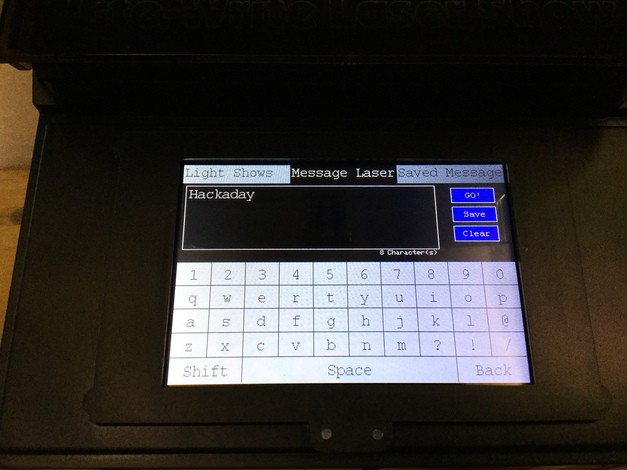-
More exploration
02/05/2019 at 17:31 • 1 comment![]()
I haven't had much time to work on this for a while. This is from a while back over christmas
The body of the device is held together with tri-bit security screws, and at my local hackerspace, the screw bits I had access to weren't long enough to fit in the hole, so I ground down the bit on an angle grinder 'till it fit. For those who worry about tool abuse, don't despair. There were at least five other bits of the same size around.
I connected an oscilliscope to the aforementioned DAC pins on the main IC, and made a fool of myself for zooming too far in.
![]()
![]()
Here's the oscilliscope working correctly.
Also, for those worried about my safety, I found the projector works fine with the laser disconnected.
Later today I'll connect an arduino to the signal pins and drive the laser with a pair of sin waves.
-
Exploration
12/20/2018 at 19:32 • 0 commentsTo start off there are eight triangle-bit screws around the edge of the device. There is a ninth Phillip's head screw towards the aperture of the projector that secures the laser in place on the inside of the projector. I decided to not mess with it as I might bring it out of alignment and cause all sorts of nasty stuff I don't know how to fix to happen.
![]()
I marked the triangle bits in red, and the Phillip's head in blue. Note the "NO USER SERVICEABLE PARTS INSIDE" sticker. We'll see about that.
![]()
Yay! I'm a little bit intimidated by all those little potentiometers. Most of the board to the left is just two reflections of what appears to be the same circuit. I suspect that this drives the two motors. From previous explorations I've found that the micro is that little one in the top right next to that ROM chip. It's a Silicon Labs C8051F410/2, a Intel 8051 micro compatible with a pair of 12 bit DACs, presumably to drive the motors. Datasheet:
https://www.silabs.com/documents/public/data-sheets/C8051F41x.pdf
There is a separate 8 pin 16 bit DAC connected to the GPIO of the 8051 for driving the speaker. datasheet:
https://www.futurlec.com/Datasheet/Others/PT8211.pdf
It's circled in the image in red.
![]()
I don't know what the button's for, It's not connected to anything. It's strange that they spent money putting it in the BOM if it was only used for testing or something.
Sadly, the EEPROM is too big for my flash jumper, so we won't be able to get a good look at the software and do a software-only hack. What I can do, is place an arduino or similar micro on the top two resistors coming out of the 8051 (Pins 17 and 18 on the datasheet respectively) and drive the motors myself, while leaving all the other stuff intact.
The four-pin cable right next to the 8051 connects to the touchscreen.
Some more closeups of the DAC and an amp.
![]()
I suspect the 5 pin connector is some sort of debug port. Silicon Labs C2 perhaps?
The touchscreen
![]()
And here are some photos of it in operation
![]()
![]()
This has so far been an interesting device to play around with. It's a shame it's so limited.
Let's change that!
-
A fresh beginning
12/19/2018 at 04:25 • 0 commentsSo, I did a preliminary dissection.
I found that the main microcontroller is a varient of the intel 8051 microcontroller manufactured by Silicon Labs called the c8051f410.
It differs from the 8051 in that it has two 12 bit DACs. These are used to drive the XY coordinates of the laser. The rom is stored on an EEPROM chip. A second DAC is tied to a serial port on the 8051 to drive speakers. A second microcontroller presumably manages the warm-up and cool-down of the laser. The unit was interacted with via a 4" diagonal capacitive touchscreen with its own micro on board. it is connected to the motherboard by a 4 wire cable (I2C?). The case was secued with four to six triangle security bits, I used a nintendo security bit to remove them (not the best form, I know but at least it isn't the comment text from xkcd 1474). Once I take it apart and post pictures, I hope this will attract enough attention to help me puzzle out the analog stuff.
Mr. Christmas Laser Projector Brain Surgery
An attempt to document the Mr. Christmas laser projector and repurpose it as a general-purpose laser projector.
 olsen
olsen